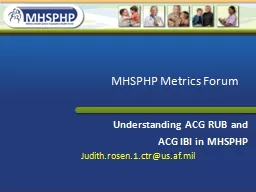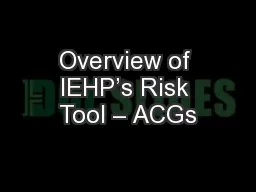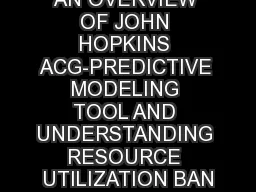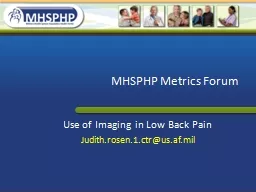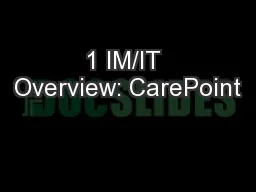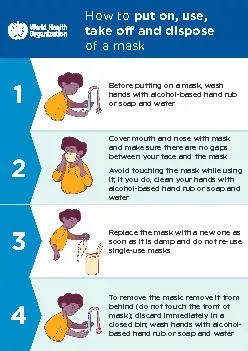PPT-MHSPHP Metrics Forum Understanding ACG RUB and
Author : jane-oiler | Published Date : 2018-11-02
ACG IBI in MHSPHP Judithrosen1ctrusafmil 2 Overview What is ACG Interpreting it at the pt level Understanding PHDR reports How to use the PHDR reports with population
Presentation Embed Code
Download Presentation
Download Presentation The PPT/PDF document "MHSPHP Metrics Forum Understanding ACG R..." is the property of its rightful owner. Permission is granted to download and print the materials on this website for personal, non-commercial use only, and to display it on your personal computer provided you do not modify the materials and that you retain all copyright notices contained in the materials. By downloading content from our website, you accept the terms of this agreement.
MHSPHP Metrics Forum Understanding ACG RUB and: Transcript
Download Rules Of Document
"MHSPHP Metrics Forum Understanding ACG RUB and"The content belongs to its owner. You may download and print it for personal use, without modification, and keep all copyright notices. By downloading, you agree to these terms.
Related Documents

